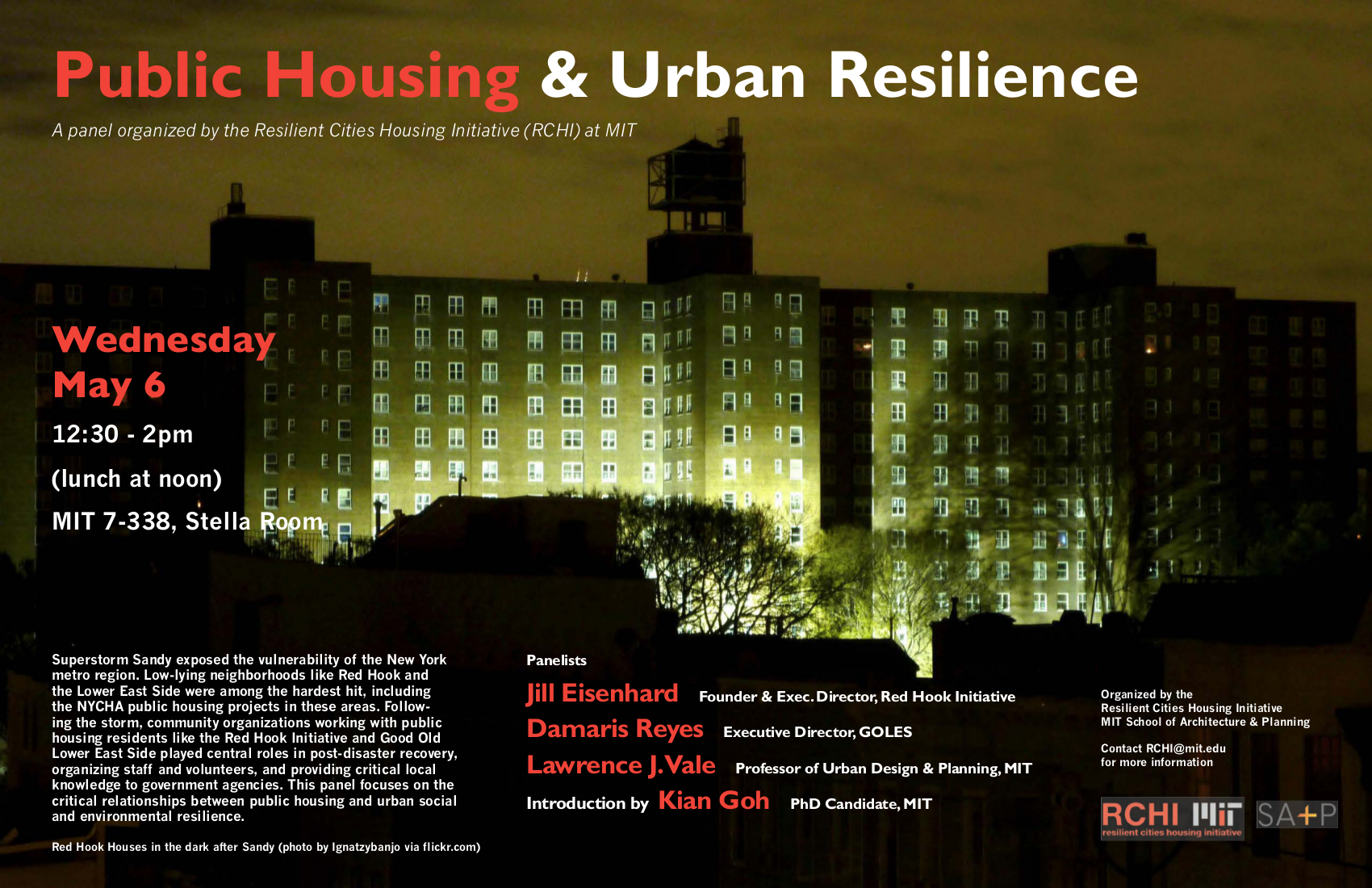May 6th 2015-Public Housing and Urban Resilience
The destruction wrought by Superstorm Sandy exposed the vulnerability of the New York metropolitan region. While images of a darkened Lower Manhattan skyline and burnt out houses on the Rockaways captured media attention, low-lying, coastal neighborhoods like Red Hook in Brooklyn and the Lower East Side in Manhattan were among the hardest hit, including the many New York City Housing Authority (NYCHA) public housing projects that are sited in these areas. In the days following the storm, community organizations and housing advocates like the Red Hook Initiative and Good Old Lower East Side (GOLES) played central roles in post-disaster recovery, organizing staff and volunteers, and providing critical local knowledge to government agencies. In mobilizing in the wake of disaster, these organizations called upon years of building community and fostering strong social ties, often in the face of systemic pressures like poverty, joblessness, over-policing, and the social and spatial marginalization endemic to public housing projects.
Following the storm, much has been said about the potential role of institutions like libraries and community centers in the wake of a disaster, acknowledging the links between social and environmental resilience. But how do urban planners understand the social relationships and community building that takes place in marginalized neighborhoods long before we arrive on the scene? This panel focuses on the critical relationships between public housing and urban social and environmental resilience. We will hear from community leaders at the center of on-the-ground grassroots recovery efforts during and after Sandy, and who continue to push for attention to secure, affordable, sustainable housing in envisioning a more resilient future city.
Organized by the Resilient Cities Housing Initiative (RCHI) at MIT DUSP, and co-sponsored by the Global Sustainability Working Group (GSWG) at MIT CIS


